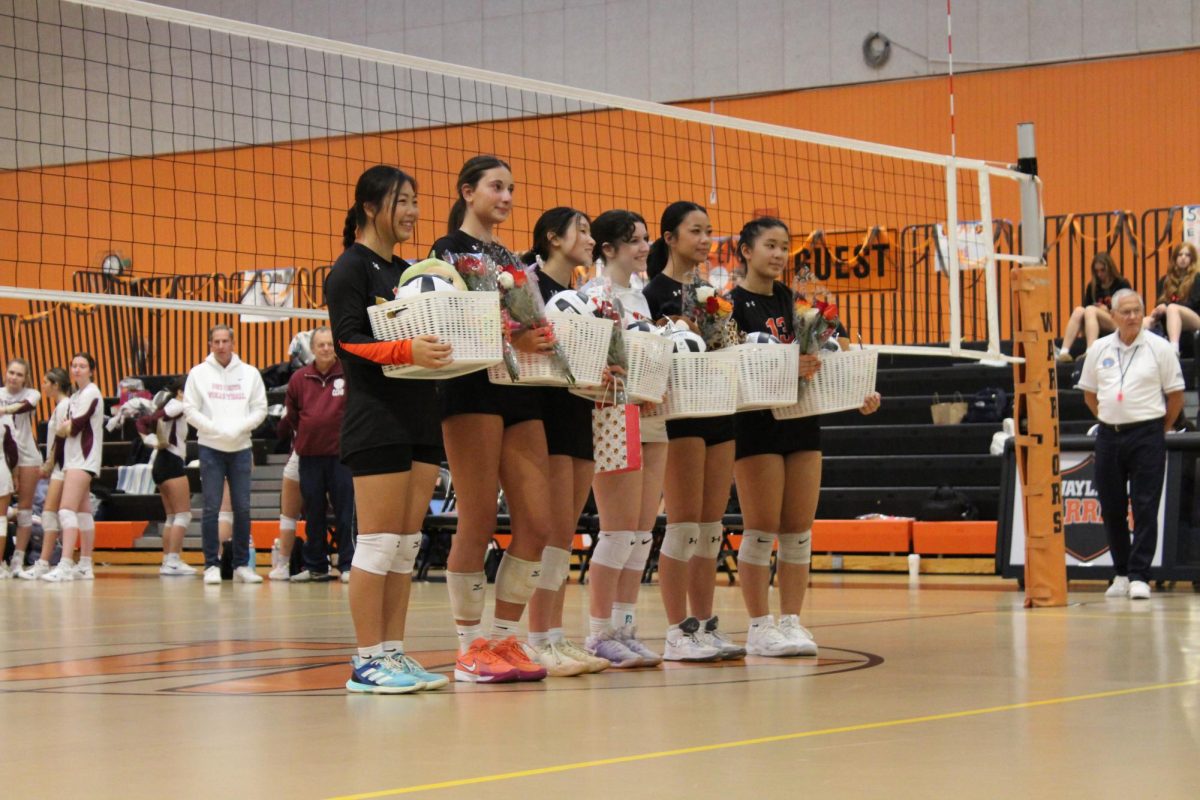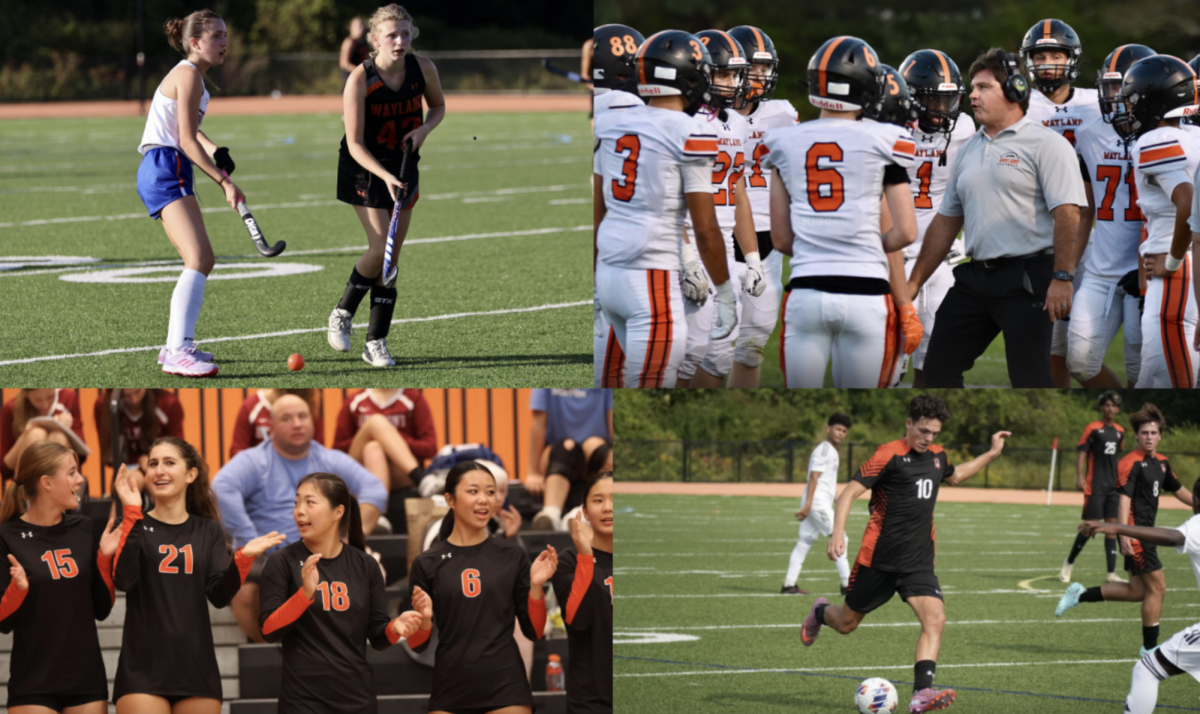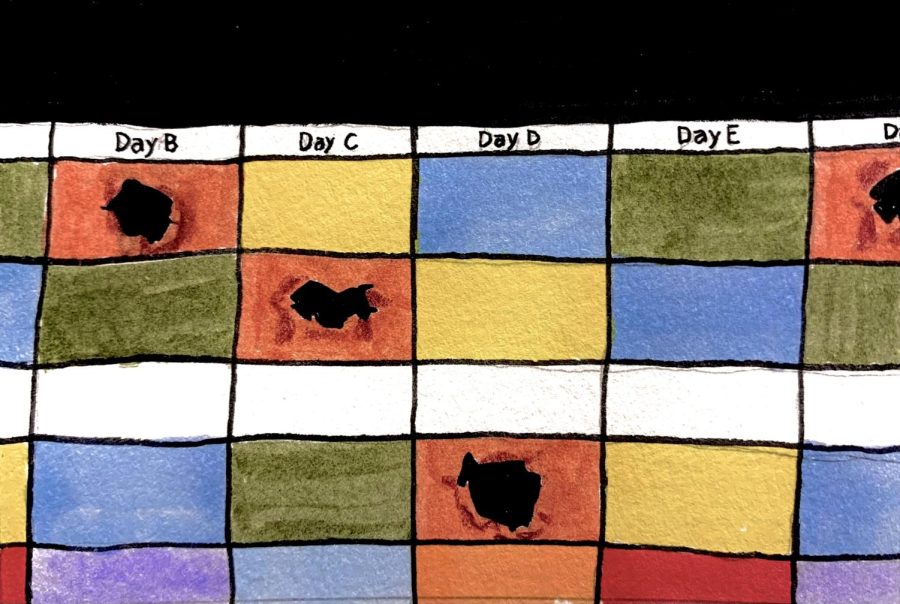Opinion: The detrimental effects of dropping classes
Credit: Alyssa Ao
WSPN’s Aimee Smith discusses the difficulties surrounding dropping out of classes at Wayland High School.
November 3, 2022
Going to my history class feels like sitting in a graveyard. Every other seat is abandoned, mourning the loss of a student who dropped the class. On the first day of school, 13 hopeful students sat in the class, now only 10 of the original group remain. Students at Wayland High School sign up for classes without any real idea of what they’re getting themselves into, and this is the result.
Before I signed up for Advanced Placement United States History (APUSH) this year, history was a subject that I considered an easy A. To go from getting straight A’s on tests in an honors class without picking up a single textbook, to receiving C’s with hours of studying was a shocking transition.
Even though my teachers last year promised that the content would be similar, I felt unprepared for my AP class. Never before had I experienced an in-class Document-Based Question or the style of College Board questions. The material was jarring.
It isn’t just AP classes that have left students feeling ill-prepared. In my other classes, I feel like I’m missing bits and pieces of crucial background information that most students learn during their early years at high school.
However, because of COVID-19, the first two years of my high school experience were full of adjusted lesson plans and cut material. My freshman year was full of math Desmos practices instead of in-person lectures where I could’ve asked questions.
Not only were there fewer opportunities to talk to teachers, but teachers simplified lesson plans. I’ve lost track of the amount of times I heard them utter the phrase, “in a normal school year, we would’ve covered this more in-depth.” As a student, this is always concerning to hear because it makes me feel as though I am unprepared for harder classes and college applications.
According to a study done on the 2020-2021 school year, most K-12 schools were approximately five months behind in mathematics and four months behind in reading. Now that COVID-19 has begun to wind down and school life is getting back to normal, that doesn’t mean teachers can ignore our experiences during the COVID-19 pandemic. Courses need to take into consideration that kids are still missing the necessary study skills and basic information normally learnt pre-pandemic.
Although I signed up for the same difficulty level courses this year, I anticipated the classes to become more difficult due to the nature of junior year. However, I planned to be able to balance this out by adding an additional free period to my schedule, which I would use to study. This was not the case. Even with my additional pre-operational period, I’ve noticed a drastic drop in my grades. Classes I would typically get A’s in have dropped down to C’s, which is enough to make anyone contemplate dropping them in favor of easier courses.
That being said, teachers should be more upfront with their students about what future courses will look like in the spring. With this simple warning, students are able to have clearer expectations for their future classes, and students won’t sign up for a course that they’re going to drop out of within the first month of school.
Additionally, dropping a class can be difficult due to the stigmatization at WHS surrounding college versus honors classes. I’ve definitely felt the pressure to sign up for more difficult classes that I know I’ll struggle to succeed in, simply because they give an honors credit. For example, knowing that math and science aren’t my strongest subjects, I still signed up for honors physics this year.
Receiving my first ever D grade on a test made me question why I had even taken the class in the first place. But, instead of immediately dropping the class, I’ve begun to try and work harder to figure out what doesn’t come naturally to me. The library has become a sanctuary where I’m able to problem solve, without the distractions of a classroom. Resources like this should be more widely known.
In a town as demanding as Wayland, the Academic Center’s resources may be our only lifeline. Meeting with a peer tutor or teacher during free periods to catch up on anything we don’t understand can mean the difference between dropping or staying in a class. Teachers are there to share their knowledge with us, and this is so important if we’re struggling with a core topic.
Dropping a class should be a last resort for students because the first grade they receive on a test is hardly indicative of what their final grade might look like in the course. Yet, it’s difficult to drop a class after the first quarter of school ends because, by then, classes are full and on different topics. This leaves students with the impossible decision of either drowning in their current class for the rest of the year, or abandoning ship to an easier class and dealing with the scheduling dilemma.
Dropping out of classes is impractical for everyone, so teachers need to give students clearer expectations on what courses will look like and students need to use Wayland’s resources instead of panicking at the first bad grade they receive. I’ve been there myself and am slowly beginning to learn how to adjust. If students work hard to advocate for themselves when they’re struggling, their final grades will reflect the effort and determination that was put into achieving grades they know they deserve. There’s nothing wrong with asking for help.















![This year, the Wayland team is made out of a JV team and a varsity team. There is a wide range of grades from eighth grade to twelfth grade that make up the teams. " [What] I will miss most [about the seniors] is their willingness to be involved," sophomore Mackenzie Grogan said. "Whether it was with school drama or referee frustration, they were really good at listening and giving good advice."](https://waylandstudentpress.com/wp-content/uploads/2025/10/8F0FD331-F005-4C3F-9F77-402D1C1953D6_1_201_a-1200x800.jpg)












